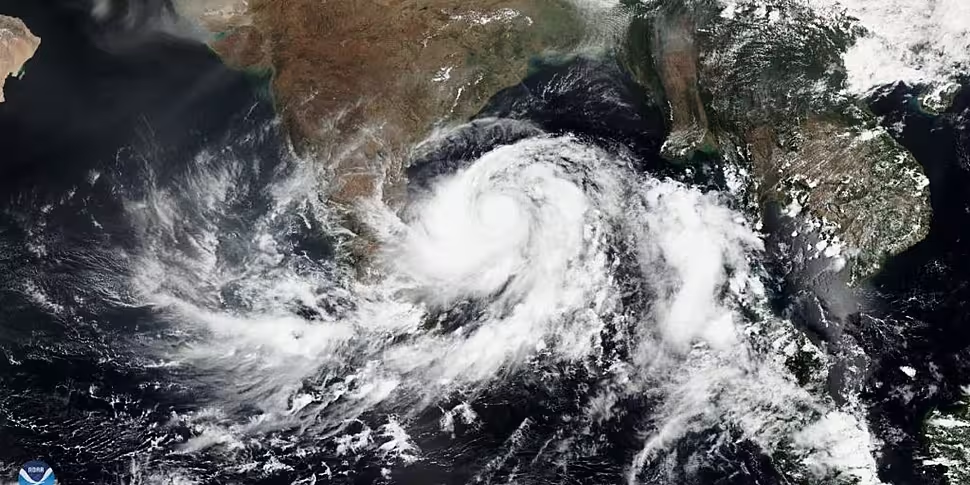About 800,000 people are being evacuated from low-lying areas of India's east coast, as a cyclone is expected to make landfall within 24 hours.
Boats, buses and trains are being used to move residents in 14 districts to cyclone shelters, safer schools and college buildings.
Tourists have also been urged to leave coastal towns in West Bengal and Odisha, where heavy to very heavy rainfall is forecast along the south coast on Thursday.
The Irish embassy in New Delhi has recommended Irish citizens monitor media reports and follow the advice of local authorities and their tour operator.
As #CycloneFani approaches the East coast of India we recommend Irish citizens to monitor media reports and follow the advice of local authorities and your tour operator https://t.co/EyPifz05HS
— Irish Embassy India (@IrlEmbIndia) May 2, 2019
In updated travel advice, the Department of Foreign Affairs has said citizens should exercise a high degree of caution.
Cyclone Fani is forecast to make landfall in the states of Odisha and West Bengal on or around May 2nd.
THE EXTREMELY SEVERE CYCLONIC STORM “FANI” LAY CENTERED AT 2030 HOURS IST OF TODAY, 2ND MAY, 2019 NEAR LAT. 17.8 0N AND LONG. 84.90E OVER WESTCENTRAL BAY OF BENGAL ABOUT 240 KM SOUTH-SOUTHWEST OF PURI AND 170 KM EAST-NORTHEAST OF VISAKHAPATNAM. pic.twitter.com/4CBQ3kdQZP
— India Meteorological Department (@Indiametdept) May 2, 2019
The department said: "Irish citizens travelling to India should exercise a high degree of caution at all times.
"There currently exists a relatively high threat from terrorist activity, civil unrest, crime and a high rate of vehicle accidents. You should remain vigilant at all times and monitor local media for information about possible new safety or security risks."
Severe Cyclonic Storm Fani is currently a category three storm, and wind speeds gusting up to 125mph are forecast by Friday.
Odisha's special relief commissioner, Bishnupada Sethi, said: "We are maximising efforts at all levels for evacuation for the time being."
India's cyclone season generally lasts from April to December, with severe storms often leading to the evacuation of tens of thousands of people, widespread deaths and damage to crops and property in both India and Bangladesh.
A super-cyclone battered the coast of Odisha for 30 hours, killing 10,000 people, two decades ago.
It is estimated that the mass evacuation of almost one million people ahead of a storm in 2013 saved thousands of lives.
Additional reporting: IRN
Main image: Cyclonic Storm Fani is seen on April 30th, 2019 | Image via @NOAASatellites on Twitter









